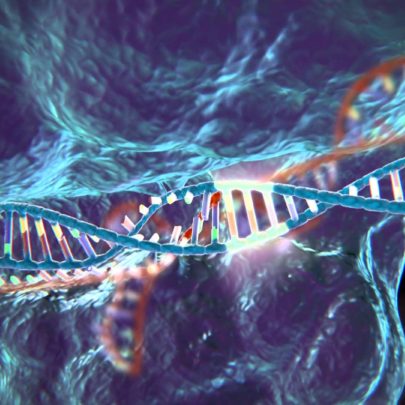The future of genome editing?
The future of gene editing has begun

An illustration of the Cas9 protein modifying a gene
Clustered Regularly Interspaced Short Palindromic Repeats (CRISPR, pronounced “Crisper”) and the segments of spacer DNA directly following the CRISPR segment, called CRISPR-associated systems (Cas9) has been one of the most important medical breakthroughs of 2016. The concept behind CRISPR and the Cas9 protein is simple. In prokaryotic immune systems, a sort of acquired immunity is created when the prokaryote is exposed to foreign DNA. The Cas9 protein acts as a pair of microscopic scissors by remembering pieces of foreign DNA it had previously been exposed to and “cutting” those pieces out of the DNA sequence.
The idea of short palindromic repeats has been known since they were accidentally cloned in 1987 by a professor at Osaku University in Japan; however, the implications of this fundamental process of prokaryotes has only been recently utilized and refined. A very simple version of CRISPR and Cas9 has recently been used to edit genomes in eukaryotes.
This was done by tricking the Cas9 protein by exposing it to a segment of foreign DNA. Once the CRISPR segment and Cas9 protein were introduced to eukaryotic cells that included the segment of DNA Cas9 had been previously exposed to, the protein was able to remove this piece of DNA with incredible accuracy. While removing segments of DNA is not a new practice, older processes of genome editing were costly, inconsistent and time-consuming while using the Cas9 protein can be done for less than $100 and in a matter of hours.
The implications of this to the field of molecular biology are staggering, from improving plants for more bountiful yields or animals with resistances to diseases; however, the most important use could be for gene isolation. By isolating particular genes, scientists could potentially discover the specific gene that is responsible for diseases such as cancer.
With every major innovation comes critics, and the most common concern critics of gene editing are voicing is the fear of “designer babies.” A designer baby is the idea that parents could selectively choose which dominant and recessive genes and their associated traits would be expressed in their children.
These fears can be quelled for the time being because, while it may be easy to remove an unwanted gene, replacing it is a much more complicated process which is still being researched. With the advances in medicine moving forward as quickly as they are, it’s hard to predict what will emerge in the next decade, but with the potential to saves millions of lives for generations to come, CRISPR and the Cas9 protein have been one of the most impactful discoveries of the 21st century.


